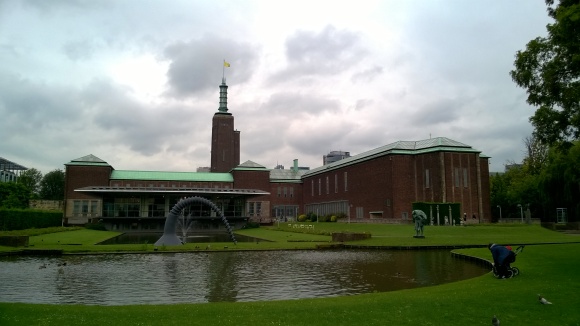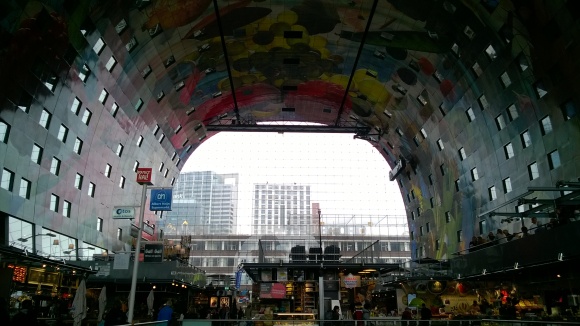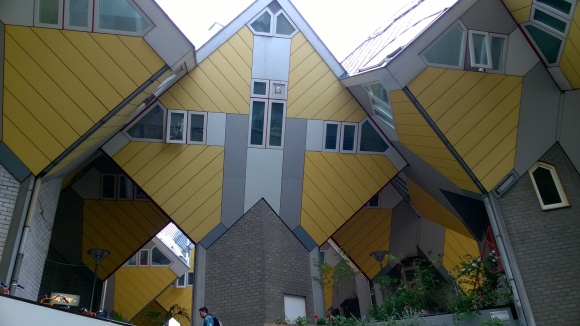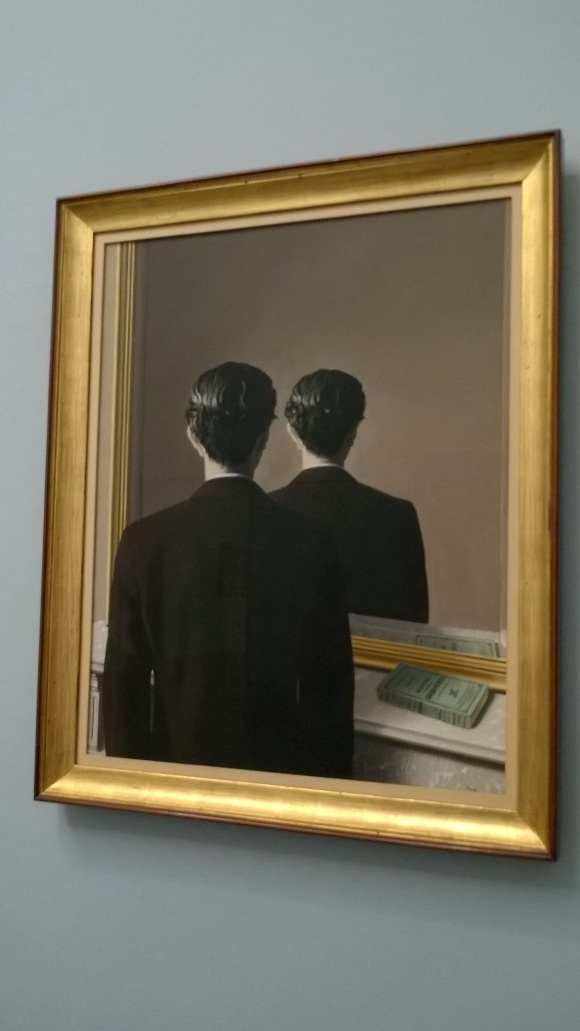
I am usually based in London and I am “Londonholic” too. However, I have recently been wandering somewhere else, having decided to take a holiday from the rain with my brother, Lorenzo.
This lead us (quite unpredictably, since the weather is even worse), to the Netherlands, and I must say I fell in love with Rotterdam.

Rotterdam is everything but a ordinary place. Completely destroyed during WW2, as many people know after the war it has undergone a massive reconstruction; the latter, however, didn’t follow the lines of traditional northern Europe architecture, rather the one of post-war avant-garde.
Thus Rotterdam is the most interesting place in terms of architectural innovations, and you can see many buildings here displaying an interest in aesthetics, the game between form and light, the laws of physics – an interest which sometimes overcomes functionality issues. The resulting skyline is extremely particular and you can bet every corner you turn in Rotterdam, you’ll find something to surprise your eye!

Notwithstanding some examples which I personally found quite distasteful, the city is generally very well constructed and I must say all the new additions (there are always men at work!) perfectly fit the context.
The Museumpark is an example of this equilibrium. As its name tells you, here you will find a conglomeration of different museums, all around a very nice park full of perfumed flowers, which must be lovely for a pic-nic (no sun at all when I visited it though!). I must definitely recommend both the Museum Boijmans van Beuningen and the Kunsthal, where I spent delightful hours.
The Boijmans is a traditional fine art museum that also includes a huge library and as a special wing for temporary exhibitions. I made my way through the permanent collection, which is displayed in a chronological order, from religious art of the XIV c. to the most contemporary installations. Every room is arranged around some certain theme and the general explicative panels always give some historical reference to fit the artists in both their regional and European context. I particularly appreciated the way the curators emphasized the links between Italian and transalpine artists, whose works and techniques influenced each other.

Moreover, a comparison with the famous Rijksmuseum in Amsterdam shows how the latter is more intended to be a shrine for Dutch masters, while the Boijmans collection looks more to Europe in general, even if of course the Dutch masters are heavily present. Nevertheless, I praise the effort put in showing artists coming from different parts of our continent, from Italy to Spain to Germany. The Boijmans holds some true jewels of Flemish and Dutch art, such as the famous Tower of Babel by Pieter Bruegel the Elder. Staring at this painting is a very strong experience; the canvas itself is not even that huge, but the tower, still unfinished, touches the clouds above and makes the natural world around it look like a miniature – not to talk of the tiny, almost invisible human figures who, like busy ants, struggle to complete this absurd task. The sense of humility which this scene instills in the viewer makes you recognise that The Tower of Babel truly is a masterpiece.
In the rooms concerning the XVII c. Dutch genre you will find some Rembrandts, including a very intimate portrait of the painter’s son, entitled Titus at his desk, which actually doesn’t fit the moralistic tone usually found in pictures coming from that period.
In the following rooms at some point you will be surprised to see the head of a man popping out the floor to stare at the paintings with curiosity and a bit of insolence. This is in fact a piece by Maurizio Cattelan, Untitled (Manhole). While I don’t find many of his jokes so funny, this one is not only ironic but also engages me in questions regarding contemporary art as the loss of beauty, and the position of contemporary artists in relation to the Old Masters.



I would also like to mention the room of Impressionism, where among a copy of Degas’s Little dancer of fourteen years and some other important representatives, you can take a look at some of Van Gogh’s earlier works, and admire Medardo Rosso’s enchanting Woman with a Veil, flanked by a touching poem inspired by it.
At any rate, the most interesting works are displayed in the rooms dealing with Expressionism and Surrealism. It must be said the museum has a stunning collection of paintings and sculptures by Oskar Kokoschka, Paul Signac, René Magritte, Salvador Dalí, Max Ernst and Giorgio de Chirico. As the panels explained the relationship between the British connoisseur Edward James and both Magritte and Dalí, I particularly enjoyed Magritte’s enigmatic portrait of James sitting in front of a mirror in his house in London.

While this first visit was more meditative, the one I had to the Kunsthal was actually physically enjoyable. Scattered through different levels, there are various temporary exhibitions, but the place was undergoing a reorganization I suppose, because some were out of the visitor’s reach. I experienced the most different installations of the exhibition Do it! in which the underlying theory is that people must enjoy and be part of an artwork, and the curators wanted to encourage this by putting on display an idea by the artist that must be carried out by the audience. The funniest was an installation with two armchairs where you can book a breakfast with an artist – for the reasonable price of 35€. The exhibition overall was a very entertaining experience, in which maybe I didn’t think as much as I did in the Bojimans, but indeed I had a good time.
And that’s what’s all about, in the end.

Don’t miss these beautiful temples of art if you get the chance to go to Rotterdam! The city itself was a very pleasant discovery.
